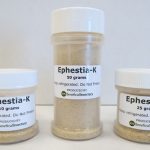General
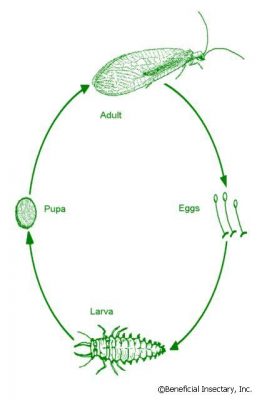
Chrysoperla rufilabris is a species of green lacewing whose larvae are aggressive predators. They are primarily used for aphid and, to an extent, mealybug control, but will also feed on other soft-bodied arthropod pests including whiteflies (eggs and immature stages), some species of scale insects, and a few species of pest mites. Adults are not predatory, and only feed on nectar or pollen. However, C. rufilabris are available as eggs, larvae, or adults. Which life-stage you choose is dependent on pest level, timing, and environment. Eggs are useful as aphid prevention on highly susceptible plants, or if pest levels are still low. The major advantage of using the eggs is they are more affordable than the larvae. The larvae are excellent for a quick knockdown of aphids or other suitable pest outbreaks. The adults are mainly utilized for tree production, since they will fly to the foliage where they lay their eggs. One of the best benefits of using lacewings is that they are not picky about what aphid species they eat (unlike Aphidius spp. and other parasitoids). If you are unsure of the aphid species, or have multiple species in the same facility, lacewings are a great option. Even if you know precisely which species of aphid you have, for outbreaks or hotspots, lacewings are always a great choice, in combination with Aphidius spp. or other parasitoid wasps.
Life-History
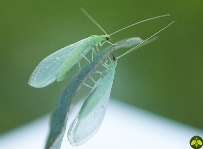
Adult green lacewings are around 2 cm long and resemble moths when in flight. Females will actively seek out aphid colonies so they can lay their eggs among them. Eggs are attached to hair-like stalks that hang down below the leaves (if they’re laid on the underside, which they usually are). The tiny larvae that hatch out will immediately begin consuming aphids or other pests (or each other if there are no pests present). They can eat around 100 aphids or more in their lifetime. Depending on temperature, larvae will live anywhere between two to three weeks before pupating. The pupal stage lasts roughly five days, and adults can live four to six weeks. Optimal conditions for the larvae are 67–89°F with a relative humidity of 30% or greater. These are the optimal conditions, so a few degrees off either way will not have a big impact on them.
Benefits
The biggest benefit of lacewing larvae is how aggressive they are. They will eat anything they can catch, and they are always hungry. They’re also cost effective, especially the eggs. They have the ability to quickly knock down moderate levels of aphid infestations, as well as help control many other pests. The adults are particularly useful in tree crops, since they will fly to the aphid populations where they lay their eggs.
Drawbacks
As mentioned above, they will eat almost anything, and that includes people (they’ll try to, at least). The larvae will bite, but it’s not medically significant and has no long-lasting effects. Since the larvae are small, it’s very difficult to scout for them once they’re in the crop. The only other real downside is it’s difficult to use them in crops that are hard to get to (e.g. hanging baskets), or on crops with many small populations of aphids scattered throughout the facility. The larvae don’t fly, so you have to put them exactly where you need them.
Scouting
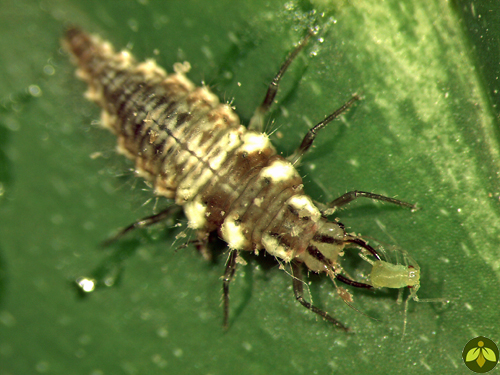
It’ll be difficult to find the larvae in the crop. They’re small, fast, and don’t want to be found. The best opportunity would be in the evening, though. The biggest clue that they’re in the crop and doing their jobs would be the lack of pests a few days after release.
Advisories
If ants are present, be sure that they are be controlled before releasing Chrysoperla or aphid parasitoids. Aphids produce honeydew that the ants feed on. Because of this, ants protect them from predators or parasitoids. Adult lacewings need pollen, nectar, or other suitable food in order to breed and lay eggs. Wheast can be given to them as a supplement. Please note, Chrysoperla rufilabris do not eat root-feeding aphids. At this time, there is no scientific evidence that supports using Beneficial Insects for root-feeding aphids. Approved mycoinsecticides labelled for aphids applied to root zone is the best curative approach that we are aware of at the moment.
Usages
The eggs and larvae are useful in greenhouses, fields, interiorscapes, orchards, and gardens. They can be used just about anywhere that the pests are. The adults should be used only in row crops, trees, orchards, and possibly tall interior plantings .
Release Rates for Chrysoperla rufilabris
| Classification | Release Information |
|---|---|
| Prevent | 1-3 per 10sq.ft., monthly, as needed |
| Low | 2-5 per 10sq.ft. bi-weekly, 2-3 times |
| Med | 4-8 per 10sq.ft., weekly, 2-4 times |
| High | 1 per sq.ft., bi-wkly, 3-5 times |
| Maint | 1-2 per 10sq.ft., tri-weekly, indef. |
| Garden | 60-90% of rates listed |
| Acre+ | 20-50% of rates listed. |
| Comments | Rates shown are for larvae. If you’re using eggs, multiply the calculated rate by five (5). If employing adults, divide the calculated rate by four (4). Release rate suggestions on these pages are usually not sufficient for cannabis growers. For cannabis release rates contact us at 1 (800) 477 3715. |
Produced in the USA by Beneficial Insectary!
Purchase
-
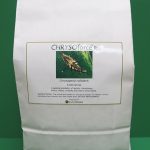 CHRYSOforce™ R – lacewing larvae in bulk (5,000/ 10,000)$154.95 – $300.95
CHRYSOforce™ R – lacewing larvae in bulk (5,000/ 10,000)$154.95 – $300.95 -
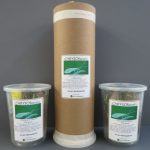 CHRYSOforce™ R – lacewing adults (100/250/1,000).$65.95 – $232.95
CHRYSOforce™ R – lacewing adults (100/250/1,000).$65.95 – $232.95 -
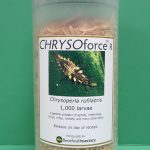 CHRYSOforce™ R – lacewing larvae in bottle (1,000)$34.95
CHRYSOforce™ R – lacewing larvae in bottle (1,000)$34.95 -
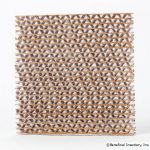 CHRYSOforce™ R – lacewing larvae in hexcell unit (400)$34.95
CHRYSOforce™ R – lacewing larvae in hexcell unit (400)$34.95 -
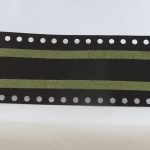 CHRYSOforce™ R – lacewing eggs on cards (5,000)$31.95
CHRYSOforce™ R – lacewing eggs on cards (5,000)$31.95 -
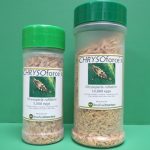 CHRYSOforce™ R – lacewing eggs in loose form (5,000/ 10,000/ 100,000)$24.95 – $399.95
CHRYSOforce™ R – lacewing eggs in loose form (5,000/ 10,000/ 100,000)$24.95 – $399.95


